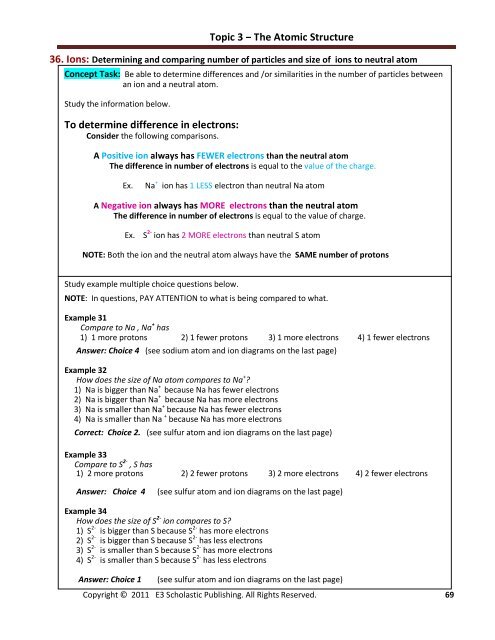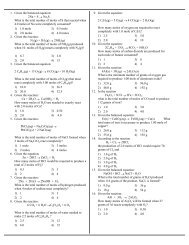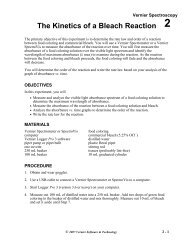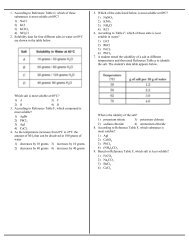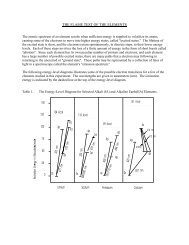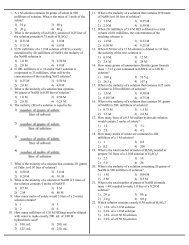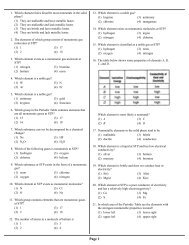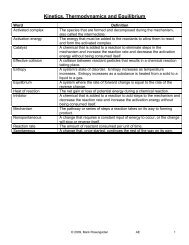Topic 1 - Matter and Energy - Revsworld
Topic 1 - Matter and Energy - Revsworld
Topic 1 - Matter and Energy - Revsworld
Create successful ePaper yourself
Turn your PDF publications into a flip-book with our unique Google optimized e-Paper software.
.<br />
<strong>Topic</strong> 3 – The Atomic Structure<br />
36. Ions: Determining <strong>and</strong> comparing number of particles <strong>and</strong> size of ions to neutral atom<br />
Concept Task: Be able to determine differences <strong>and</strong> /or similarities in the number of particles between<br />
an ion <strong>and</strong> a neutral atom.<br />
Study the information below.<br />
To determine difference in electrons:<br />
Consider the following comparisons.<br />
A Positive ion always has FEWER electrons than the neutral atom<br />
The difference in number of electrons is equal to the value of the charge.<br />
Ex. Na + ion has 1 LESS electron than neutral Na atom<br />
A Negative ion always has MORE electrons than the neutral atom<br />
The difference in number of electrons is equal to the value of charge.<br />
Ex. S 2- ion has 2 MORE electrons than neutral S atom<br />
NOTE: Both the ion <strong>and</strong> the neutral atom always have the SAME number of protons<br />
Study example multiple choice questions below.<br />
NOTE: In questions, PAY ATTENTION to what is being compared to what.<br />
Example 31<br />
Compare to Na , Na + has<br />
1) 1 more protons 2) 1 fewer protons 3) 1 more electrons 4) 1 fewer electrons<br />
Answer: Choice 4 (see sodium atom <strong>and</strong> ion diagrams on the last page)<br />
Example 32<br />
How does the size of Na atom compares to Na + ?<br />
1) Na is bigger than Na + because Na has fewer electrons<br />
2) Na is bigger than Na + because Na has more electrons<br />
3) Na is smaller than Na + because Na has fewer electrons<br />
4) Na is smaller than Na + because Na has more electrons<br />
Correct: Choice 2. (see sulfur atom <strong>and</strong> ion diagrams on the last page)<br />
Example 33<br />
Compare to S 2- , S has<br />
1) 2 more protons 2) 2 fewer protons 3) 2 more electrons 4) 2 fewer electrons<br />
Answer: Choice 4<br />
(see sulfur atom <strong>and</strong> ion diagrams on the last page)<br />
Example 34<br />
How does the size of S 2- ion compares to S?<br />
1) S 2- is bigger than S because S 2- has more electrons<br />
2) S 2- is bigger than S because S 2- has less electrons<br />
3) S 2- is smaller than S because S 2- has more electrons<br />
4) S 2- is smaller than S because S 2- has less electrons<br />
Answer: Choice 1<br />
(see sulfur atom <strong>and</strong> ion diagrams on the last page)<br />
Copyright © 2011 E3 Scholastic Publishing. All Rights Reserved. 69


